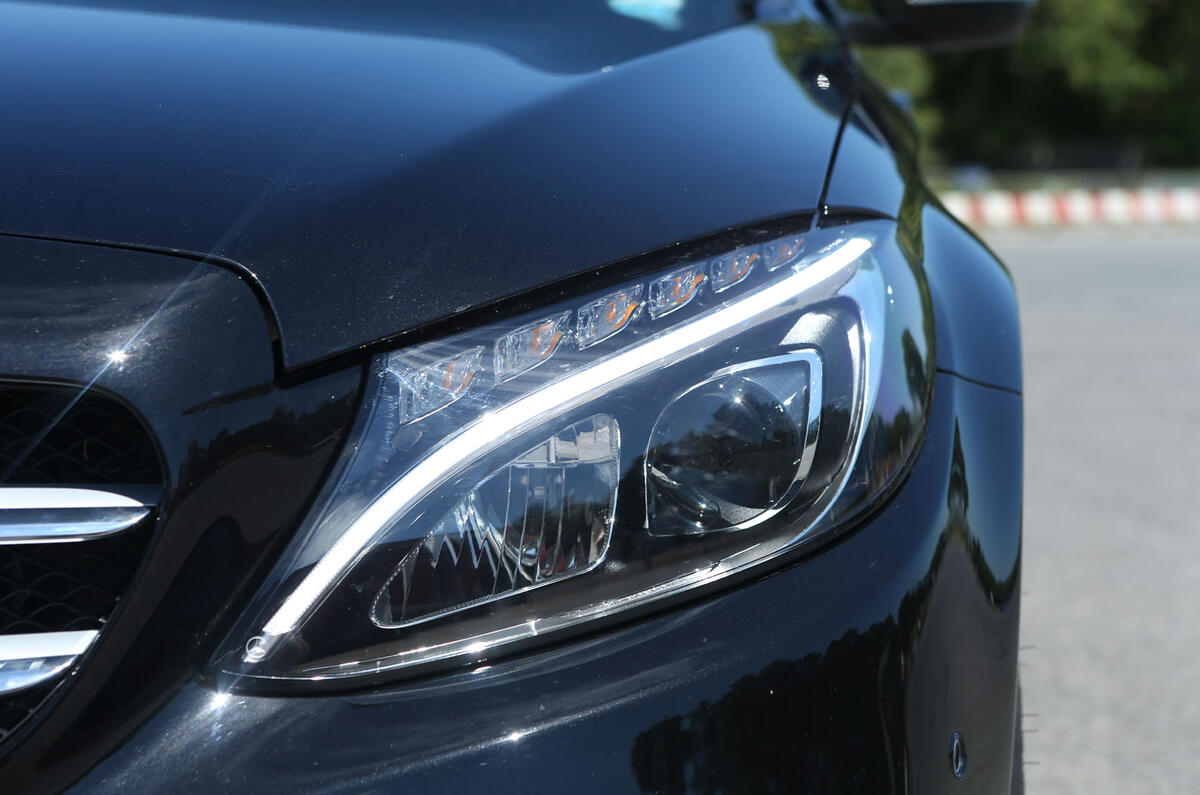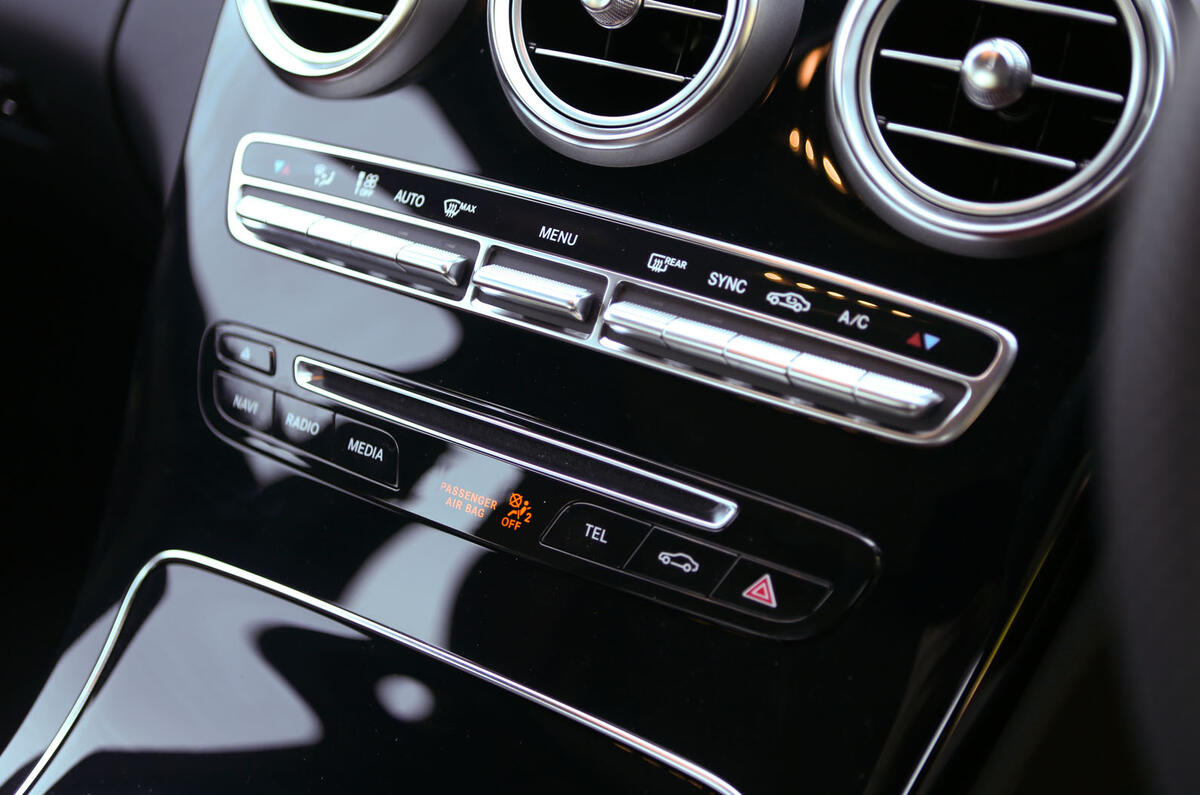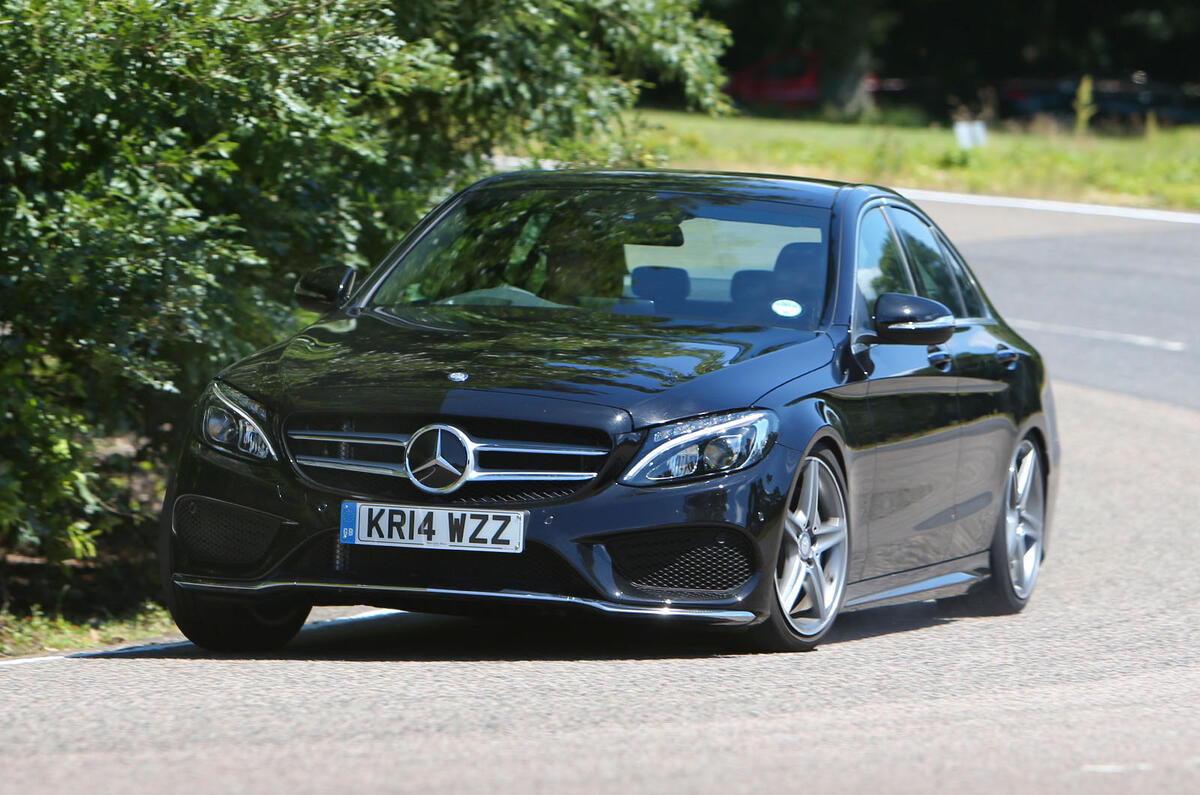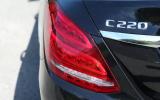Despite the C-Class’s growth spurt, it still just about fails to offer its market sector’s last word in occupant space. Adults travelling in the car’s back row could be ever so slightly better provided for, particularly on foot space and knee room.
Still, people who buy compact executive saloons probably seldom need enough space for large adults in the back – and if you don’t, this cabin has probably everything that you ever wanted from a junior German saloon.
On material quality and standard of finish, the Mercedes is breathtakingly good. Among the highlights are shining, stippled metallic air vents and air-con controls, which are the first thing that your gaze alights on.
But they set a standard that the rest of the cabin effortlessly continues. The below-the-line mouldings are every bit as solid and smooth as the more visible plastics.
The minor switches for releasing the bootlid and disabling the rear windows are as classy as the door lock and headlight consoles. Mercedes simply looks to have over-spent its rivals on absolutely everything – and has outperformed the standard set by many full-size, £60k limousines in the process.
Opt for the entry-level SE trim and you'll find 16in alloy wheels, auto wipers, cruise control, a reversing camera and Mercedes' Collision Prevention Assist Plus system fitted as standard, while inside occupants are treated to a 7.0in infotainment system with DAB tuner, multimedia interface and touchpad, and 4-way electrically adjustable front seats.
Upgrade to the fleet-friendly Executive Edition and you get heated front seats, Garmin-powered sat nav, front and rear parking sensors, and 17in alloys, while the Sport models get LED headlights, a lowered suspension, folding and dimming mirrors, and leather sports seats. The range-topping AMG Line specs include, 18in AMG alloy wheels, an aggressive bodykit and sports suspension.
Those opting for the beefy AMG models also get a bespoke trim for their fire-breathing monsters. The C 43 comes with a bespoke AMG bodykit, brake calipers and details, Artico leather upholstery and red seat belts, while the C 63 comes with a mechanical rear axle differential lock and a Nappa leather upholstery. The range-topping C 63 S comes with much of the same equipment except for 19in alloy wheels, grey seatbelts and AMG performance seats.
The driving position is sound, the seats excellent and the instruments supremely readable. Storage space is discreetly and securely provided in lidded compartments.
The only jarring, superfluous feature is the touch-sensitive pad housed atop the familiar rotary controller for the multimedia set-up, which is about as intuitive as it is effective and necessary.
Ornate speaker grilles betray a C-Class that’s fitted with Mercedes’ 590-watt Burmester surround-sound stereo — a £2270 option once you’ve paid for the necessary Comand Online multimedia set-up as well.
Predictably, it sounds magnificent. But the car’s standard Audio 20 system probably sounds more than decent, benefiting from Merc’s unique FrontBass front bulkhead resonance chambers, as seen on the Mercedes-Benz S-Class and SL before it.
You don’t have to splash out on Comand Online to get Merc’s new touchpad, as it's standard on all models. It works fairly well when recognising letters for the sat-nav but can be hit and miss when skipping tracks on the audio set-up.
Generally, it requires more precision and concentration to operate with your left hand than is advisable when driving. To us, the neighbouring scroll wheel controller is a better input mechanism.
As usual from Mercedes, Bluetooth phone connectivity is easy to operate, call quality is good and the car’s voice recognition system works very well. Excellent attention to detail from Stuttgart, as ever.

















































